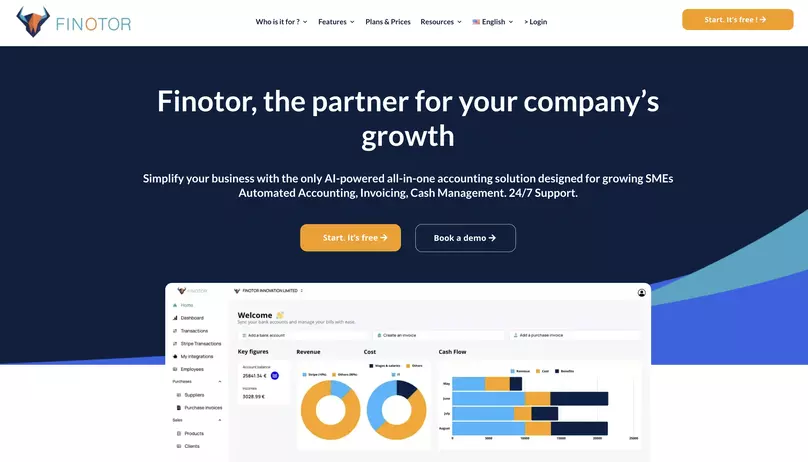Contents
- 1 Understanding Gross Profit Percentage
- 2 Analyzing Gross Profit Percentage for Financial Health
- 3 Strategies to Improve Gross Profit Percentage
- 4 Leveraging Technology to Enhance Gross Profit Percentage
- 5 Analyzing Gross Profit Percentage for Financial Health
- 6 Strategies to Improve Gross Profit Percentage
- 7 Leveraging Technology to Enhance Gross Profit Percentage
- 8 Strategies to Improve Gross Profit Percentage
- 9 Leveraging Technology to Enhance Gross Profit Percentage
- 10 Leveraging Technology to Enhance Gross Profit Percentage
Understanding Gross Profit Percentage
Defining Gross Profit and Its Importance
Gross profit is a critical financial metric that represents the difference between revenue and the cost of goods sold (COGS). It’s an essential indicator of a company’s operational efficiency and its ability to generate surplus funds from sales after covering the direct costs associated with producing its goods or services. Understanding gross profit allows businesses to make informed decisions about pricing, cost control, product development, and market strategies. It serves as the foundation for calculating the gross profit percentage, which is a key performance indicator reflecting the company’s profitability.
Calculating Gross Profit: Revenue and Cost of Goods Sold (COGS)
To calculate gross profit, subtract the cost of goods sold (COGS) from total revenue. COGS represents the direct expenses associated with producing goods or services, which can include materials, labor, and overhead directly tied to the production process. By understanding and accurately calculating COGS, businesses can better manage their resources and improve their gross profit margin. For a detailed explanation and examples of gross profit calculations, you can refer to resources provided by American Express and Indeed.
Industry Benchmarks for Gross Profit Percentage
The gross profit percentage, also known as the gross margin ratio, is a measure of a company’s financial health, represented by the percentage of revenue that exceeds the cost of goods sold. This percentage can vary widely between industries, making it important to compare a company’s performance with industry benchmarks. A higher gross profit percentage suggests a company is selling its products or services at a profit, while a lower percentage could indicate potential issues with pricing strategies or cost management. Keeping tabs on industry standards helps businesses set realistic goals and gauge their competitive position in the market.
Analyzing Gross Profit Percentage for Financial Health
Comparing Gross Profit Margins Over Time
Monitoring changes in gross profit margin over time is essential for assessing a company’s financial health and operational efficiency. An increasing trend may suggest improvements in cost control or successful pricing strategies, while a declining trend might signal rising costs or pricing pressures. Historical analysis helps businesses understand their financial trajectory and informs future strategies.
Impact of Gross Profit Percentage on Business Decisions
The gross profit percentage has a profound impact on strategic business decisions. It influences pricing policies, product line expansion, market entry, and the overall financial strategy of a company. Managers and stakeholders use this percentage to identify areas for improvement, set performance targets, and make investment decisions that align with the company’s profit objectives.
Using Gross Profit Percentage to Identify Cost-Saving Opportunities
An in-depth analysis of the gross profit percentage can help uncover cost-saving opportunities by highlighting inefficiencies and high-cost areas. By scrutinizing each component contributing to COGS, businesses can identify potential savings through supplier negotiation, process improvements, or changes in production methodologies.
Strategies to Improve Gross Profit Percentage
Optimizing Pricing Strategies
Effective pricing strategies are crucial for improving gross profit percentage. Dynamic pricing models, value-based pricing, and competitive analysis are just a few approaches that can maximize profitability. Companies need to continuously review and adjust their pricing to respond to market demand, cost fluctuations, and competitive pressures.
Efficiency in Operations and Cost Reduction
Operational efficiency and cost reduction are powerful levers for boosting gross profit margins. Streamlining processes, reducing waste, implementing lean manufacturing principles, and adopting energy-saving measures can significantly decrease COGS without compromising product quality.
Product Mix and Inventory Management
The selection of products a company offers and how it manages its inventory can greatly affect the gross profit percentage. By analyzing product profitability and inventory turnover, businesses can optimize their product mix to favor high-margin items and reduce holding costs, thereby improving their bottom line.
Leveraging Technology to Enhance Gross Profit Percentage
Implementing AI and Machine Learning for Financial Management
Artificial intelligence and machine learning offer groundbreaking ways to enhance financial management. Predictive analytics, demand forecasting, and automated decision-making can lead to more accurate pricing, inventory control, and cost management, thereby improving the gross profit margin.
Integrating with Banking and E-commerce Platforms
Integration with banking and e-commerce platforms, like Stripe and WooCommerce, facilitates seamless financial transactions and reconciliations. This eradicates manual errors, saves time, and provides real-time financial insights, contributing to a healthier gross profit percentage.
Automating Accounting Processes with Finotor
Finotor’s all-in-one solution for enterprise financial management encompasses tools to automate accounting processes, thereby reducing operational costs and improving accuracy. With features such as real-time data analysis and 24/7 customer support, Finotor is an invaluable tool for businesses aiming to boost their gross profit percentage. Discover more at Finotor.
Analyzing Gross Profit Percentage for Financial Health
Understanding the gross profit percentage is pivotal for assessing the financial health of a business. This metric not only reflects the efficiency of your production process but also reveals the portion of revenue that exceeds the cost of goods sold (COGS), serving as a key indicator of a company’s profitability.
Comparing Gross Profit Margins Over Time
Comparative analysis of gross profit margins over time provides invaluable insights into business performance and operational efficiency. By tracking these margins, companies can detect trends, adapt strategies, and make informed decisions to enhance profitability. An upward trend indicates an improvement in cost management or pricing strategies, while a downward trend might signal rising costs or pricing pressures. For a comprehensive understanding, visit Investopedia’s detailed guide on gross profit margin.
Impact of Gross Profit Percentage on Business Decisions
Business decisions must be data-driven, and the gross profit percentage is a crucial piece of data. It affects decisions on pricing, product development, market expansion, and cost control. A healthy gross profit margin can provide the leeway needed to invest in growth and innovation, whereas a slim margin might necessitate a more cautious approach.
Using Gross Profit Percentage to Identify Cost-Saving Opportunities
Gross profit percentage analysis can also highlight opportunities for cost-saving. Understanding where the bulk of production costs come from enables a business to target those areas for improvements, such as renegotiating supplier contracts or optimizing production processes. For a detailed explanation on calculating gross profit margin percentage, check out this resource from BeProfit.
Strategies to Improve Gross Profit Percentage
Improving the gross profit percentage is imperative for maintaining competitive edge and ensuring long-term sustainability. Here we delve into strategies to optimize this crucial metric.
Optimizing Pricing Strategies
Reevaluating pricing strategies can have an immediate impact on gross profit margins. It involves analyzing customer demand, competitor pricing, and the perceived value of your offerings to determine the optimal price point.
Efficiency in Operations and Cost Reduction
Efficiency in operations directly correlates with the reduction in costs of goods sold, thereby boosting gross profit margins. Streamlining operations, reducing waste, and improving labor efficiency are some of the strategies businesses can employ.
Product Mix and Inventory Management
The selection of products a company offers and how it manages inventory can also influence gross profit margins. By focusing on high-margin items and optimizing inventory levels to reduce holding costs, businesses can improve their overall gross profit percentage.
Leveraging Technology to Enhance Gross Profit Percentage
In the digital age, technology stands as the cornerstone for enhancing gross profit margins. From automating mundane tasks to providing advanced analytics, the right technological tools can drive significant improvements in profitability.
Implementing AI and Machine Learning for Financial Management
AI and machine learning can revolutionize financial management by providing predictive analytics, automating routine tasks, and offering insights into cost savings. These technologies enable businesses to make smarter decisions faster.
Integrating with Banking and E-commerce Platforms
Seamless integration with banking and e-commerce platforms, such as Stripe and WooCommerce, simplifies financial operations and reduces errors. It ensures precision in financial reporting and improves the efficiency of reconciliation processes.
Automating Accounting Processes with Finotor
Finotor’s all-in-one solution automates accounting processes, saving time and reducing human error. With its advanced features and 24/7 customer support, Finotor is instrumental in enhancing gross profit margins. Discover how Finotor can transform your financial management at Finotor.com.
Strategies to Improve Gross Profit Percentage
As businesses strive to thrive in competitive markets, understanding and improving the gross profit percentage is crucial. This measure of efficiency highlights how well a company can use its resources to generate profit. Let’s explore actionable strategies that businesses, including those using Finotor’s comprehensive financial management solutions, can implement to enhance their profitability.
Optimizing Pricing Strategies
One of the most direct ways to impact your gross profit percentage is through pricing strategies. Setting the right prices is a delicate balance between staying competitive and ensuring a healthy margin. Companies need to conduct market analyses and customer research to understand the perceived value of their offerings. Dynamic pricing strategies, such as offering discounts on volume purchases or premium pricing for high-demand items, can also be advantageous. By leveraging real-time data and analytics, businesses can fine-tune their pricing to optimize gross profit margins.
Efficiency in Operations and Cost Reduction
Increasing operational efficiency is another avenue to boost the gross profit percentage. By streamlining processes and adopting lean methodologies, businesses can reduce waste and lower their cost of goods sold (COGS). This might involve negotiating better terms with suppliers, investing in more efficient technologies, or outsourcing non-core activities. A significant aspect of operational efficiency is continuous improvement, which can be bolstered by regular reviews of processes and performance metrics.
Product Mix and Inventory Management
The composition of products or services offered and how inventory is managed can profoundly impact the gross profit percentage. Companies should analyze their product mix to identify high-margin items and focus on promoting these more heavily. Inventory management, on the other hand, requires a strategic approach to ensure that stock levels are aligned with demand, thus minimizing holding costs and reducing the risk of obsolete inventory. Sophisticated inventory management systems can provide insights into sales patterns, helping businesses to optimize their stock levels and improve their gross margin.
Leveraging Technology to Enhance Gross Profit Percentage
In the digital age, technology plays a pivotal role in bolstering a company’s financial health. Let’s look at how integrating advanced tools and platforms can lead to better management of gross profits.
Implementing AI and Machine Learning for Financial Management
Artificial intelligence (AI) and machine learning (ML) are revolutionizing financial management. By implementing these technologies, companies can gain predictive insights into market trends, customer behavior, and operational efficiencies. AI-driven analytics can forecast revenue and optimize COGS by identifying cost-saving opportunities and inefficiencies. With Finotor’s AI and ML capabilities, businesses can stay ahead of the curve in managing their financial operations effectively.
Integrating with Banking and E-commerce Platforms
Integration with banking and e-commerce platforms streamlines financial transactions and data reconciliation. Tools like Finotor which facilitate seamless integration with systems like Stripe and WooCommerce, simplify bank reconciliations and provide a holistic view of financial data. This integration enables businesses to maintain accurate records, improve cash flow management, and make informed decisions that can positively impact their gross profit percentage.
Automating Accounting Processes with Finotor
Automating accounting processes is a key strategy for improving gross profit percentages. By using Finotor’s all-in-one financial management solution, businesses can reduce manual errors, save time on tedious tasks, and ensure compliance. Automation helps in creating more efficient workflows, allowing firms to focus on strategic activities that drive profitability. With real-time financial reporting and insights, Finotor empowers businesses to analyze their gross profit margins effectively and enact data-driven strategies to improve them.
Understanding and improving gross profit percentage is essential for long-term business sustainability. By leveraging strategies such as optimizing pricing, enhancing operational efficiency, managing product mix and inventory, and incorporating advanced technologies like AI and ML, businesses can significantly improve their financial health. The automated solutions offered by Finotor are instrumental in this endeavor, providing the tools needed for precise financial management and informed decision-making.
Leveraging Technology to Enhance Gross Profit Percentage
In the competitive landscape of business finance, leveraging technology is crucial for enhancing a company’s Gross Profit Percentage (GPP). By integrating innovative tech solutions, companies like Finotor enable businesses to optimize their financial operations, maintain accurate accounting, and improve decision-making processes. Let’s delve into how technology, particularly AI, machine learning, and platform integration, can significantly boost your GPP.
Implementing AI and Machine Learning for Financial Management
The advent of AI and machine learning has revolutionized financial management, allowing for more precise and informed business decisions. Finotor’s AI-driven tools can analyze vast quantities of financial data to identify trends, patterns, and anomalies. This level of analysis supports businesses in making strategic decisions that positively affect their gross profit margins. Moreover, predictive analytics can forecast future revenue and costs, allowing for adjustments in strategy that can enhance profitability.
Integrating with Banking and E-commerce Platforms
Integration with banking and e-commerce platforms is another technological strategy that can elevate a company’s financial health. Finotor simplifies the process by providing seamless integration with systems such as Stripe and WooCommerce. This connectivity allows for real-time transaction monitoring and easier reconciliation of accounts, which is vital for maintaining an accurate picture of revenue and cost of goods sold (COGS)—key components in calculating GPP. By linking these platforms, businesses can reduce errors and save time on manual data entry, leading to a more efficient operation and improved gross profit percentages.
For additional insights on the importance of integration for gross margin, visit Paddle’s Gross Margin Resources.
Automating Accounting Processes with Finotor
Automating accounting processes is a significant step in improving GPP. By utilizing Finotor’s all-in-one financial solution, businesses can automate many of the time-consuming tasks associated with financial management. Automation not only reduces the likelihood of human error but also frees up valuable time for business owners and finance teams to focus on strategic activities that can directly influence the company’s profitability. With features like automated invoice generation, expense tracking, and financial reporting, Finotor provides companies with the tools necessary to maintain a healthy gross profit margin. Learn more about how automation can affect your gross margin by exploring FreshBooks’ guide on calculating gross margin.
In conclusion, the strategic use of technology can significantly impact a business’s ability to manage and improve its gross profit percentage. Through AI and machine learning, seamless integration with financial platforms, and the automation of accounting processes with tools like Finotor, companies can unlock new levels of financial efficiency and insight. In today’s digital economy, these technological advantages are not just beneficial—they’re essential for staying competitive and achieving long-term financial success.









